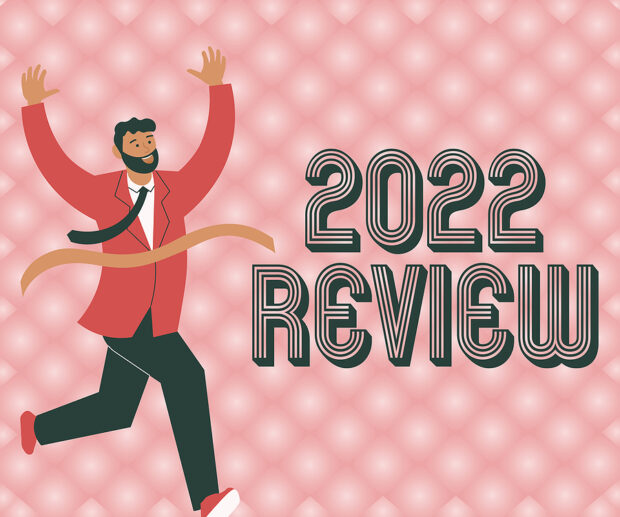With commercial lines insurers expected to report the lowest full-year aggregate combined ratio in 15 years, together with double-digit direct premium growth, Moody’s Investors Service announced a stable outlook for the U.S. P/C commercial lines sector.
The outlook report, “2023 outlook stable on solid underwriting results despite further claims inflation,” notes the negative forces that slowing commercial insurance price hikes and persisting claims inflation could have on underwriting profits. But analysts expect price increases to continue to fall in line with loss costs, heralding continued strong underwriting results in 2023.
So far, the aggregate combined ratio for the top 20 U.S. commercial lines property/casualty insurers is 94.4 through the first six months of 2022, Moody’s reports. That’s 2.5 points below the full-year combined ratio for the same group for 2021 and 7.1 points below 2020.
“If the combined ratio were to stay around the 94 range for the remainder of 2022, it would mark the lowest full-year combined ratio for this cohort of insurers since 2007,” the report says.
The report notes that the Top 20 U.S. P/C insurers included in the combined ratio analysis are carriers that generate more than half their premiums through commercial lines, including diversified carriers like Travelers, Liberty Mutual and Nationwide, which also write significant personal lines. The personal auto results of these diversified insurers have been hurt by rising costs for auto parts and labor, as well as higher prices for replacement vehicles. Homeowners results for those with concentrations of policies in the Midwest have been hurt by losses from severe wind and hailstorms. Excluding personal auto and homeowners results, however, the aggregate commercial lines combined ratio for this cohort would likely finish 2022 in the low 90-range, depending on catastrophe losses for the remainder of the year, according to Moody’s analysts.
On the top line, the analysts used the premium growth for the first half of 2022 for the same top 20 commercial carriers to forecast that direct premiums will rise 10 percent for full-year 2022. Without tying a specific number to a 2023 premium growth prediction, the report notes that while economic growth will slow into 2023, there will be enough growth in the economy and employment to fuel increases in commercial exposures, lifting premiums together with further rate increases.
While the overall report talks about premiums keeping pace with rising loss costs, it does note some potential factors that could throw a wrench into the stable outlook. For example, commercial property “insurers are raising coverage levels and rates, but generally not sufficiently to cover higher construction costs,” the report says.
Medical inflation is another factor that could upend the sector’s stability. “Although core inflation has spiked in 2022, medical inflation has remained relatively benign. If medical inflation were to increase in line with the CPI, commercial insurers could experience underpricing and adverse reserve development in their casualty lines, particularly commercial general liability, workers compensation and commercial auto liability.”
Insurance carrier executives from The Hartford and W.R. Berkley Corp. also said medical inflation trends bear close industry attention during separate presentations at the Keefe, Bruyette & Woods insurance conference last week, but both carriers said their companies are on top of the trends.
In workers compensation, “most national carriers have fee schedules with healthcare providers that lock in a cost that is generally below retail, consumer-driven medical trends that you see,” said Christopher Swift, chief executive officer at The Hartford.
“Said another way, if you observe an index of broad-based medical, that’s operating say at the 5 percent level, we could be two to three points lower than that with our fee schedules for medical providers and even pharmacy.”
“It’s always a watch area. We watch it closely,” he said, adding that the carrier generally prices and reserves for a 5 percent trend nonetheless. “If that 5 percent trend doesn’t emerge as reserves run off, then voila, that reserve releases,” he said, describing the approach as prudent and thoughtful. “I think we’ve been ahead, but if medical inflation really does spike, we will have to adjust pricing. We’ll have to think about new business rate of growth in certain lines and ultimately charge more for the customer because of that medical inflation. But I don’t see that on the horizon. I really don’t,” he said.
Robert Berkley Jr., president and CEO of W.R. Berkley, said medical inflation is likely to tick up, commenting on trends in pharmaceutical costs and other medical. “Domestically here, there’s been a lot of chatter, but we have not really seen much coming out of Washington that’s tangible that looks to curtail pharma inflation…As far as the balance of the medical piece, I don’t think you need to look very long or hard to see the challenges that the healthcare system in this country faces. And there are many, many health systems across the nation that are suffering, to say the least, financially.”
“Ultimately, while there is a lag, that issue is going to have to be addressed. And certainly part of the solution is likely going to be costs are going up,” he said.
While medical inflation has lagged broader inflation, “that’s likely to change. So, we are considering that in how we think about pricing our product. And it’s certainly something we think that the broader industry needs to be actively grappling with as well,” Berkley said.





















 Executives on the Move at Liberty Mutual, Cowbell, W. R. Berkley
Executives on the Move at Liberty Mutual, Cowbell, W. R. Berkley  Why the Middle Market Matters and How Insurers Can Capture It
Why the Middle Market Matters and How Insurers Can Capture It  Good Times for U.S. P/C Insurers May Not Last; Auto Challenges Ahead
Good Times for U.S. P/C Insurers May Not Last; Auto Challenges Ahead  Surge of Supercharged Hurricanes Prompt Call for Cat 6 Classification
Surge of Supercharged Hurricanes Prompt Call for Cat 6 Classification 


